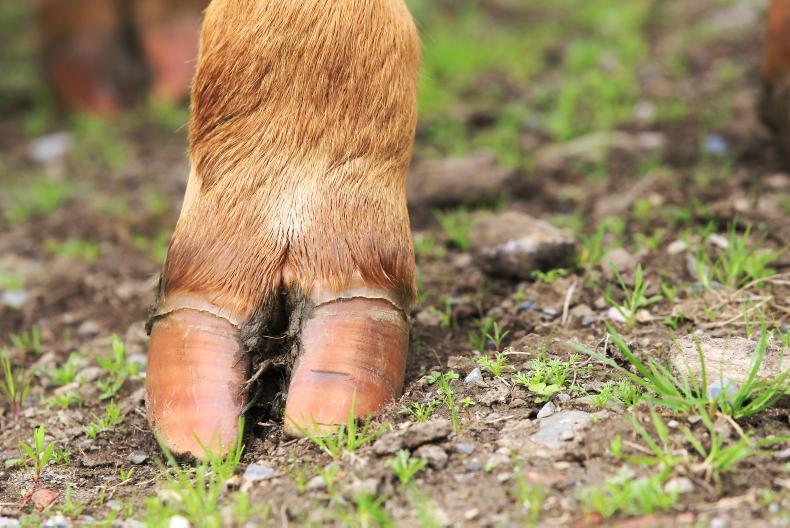There is a process involved in making a TAMS II application. The scheme is set up in a series of three-month tranche periods. When one tranche closes, another one opens. There is a set amount of expenditure allocated for each tranche from now until the end of 2020. The Tillage Scheme is open for applications and the closing date will be aligned with the closing date of the seventh tranche, which is 30 June 2017. Tillage farmers should not fret about this closing date because there will be further tranches opening in the future. In this article we have laid out the main points to consider when making an application.
Can you afford it?
Once you are sure you know what you need on your farm, you have to consider whether you can afford to make the investment. As it stands, farmers have to pay for the investment in full before they will receive grant money. This can put pressure on finances and requires careful cashflow planning, especially where big investments are being undertaken. Farmers should do a full costing for the investment and make sure a contingency sum is put in place in case any aspect of the building work goes over budget.
Planning permission
Planning permission or a declaration of exemption is required for a number of eligible investments. Notification of a decision to grant planning permission will not be sufficient. Regardless of the extent of the proposed developments, the maximum planning fee is €300. Fees for the retention of unauthorised structures are three times the normal rate, subject to a maximum of €900. Architect and engineer fees are not included here and can be substantial. Development contributions may also be payable depending on the scale of the development and exemption limits that apply in your county. The scale of contributions, conditions and limits can vary from county to county.
Other documents
Some investments such as grain stores require detailed drawings showing internal dimensions. The Department’s costings are based on internal dimensions only. Planning permission drawings are not always suitable because they sometimes only include external dimensions. Fixed investments not requiring planning or detailed drawings require a farmyard layout plan to a scale of 1:500. The main purpose of this is to show the location of existing and proposed structures. Education certificates are required if you are looking to apply for the Young Farmers Scheme. If you are in a company, you have to give a certificate of association/memorandum of association.
Make an application
Applications must be submitted online through agfood.ie. Applicants or their agents must be registered for online services (OLS) with the Department. Instructions for registration can be found at www.agfood.ie, or you can contact the agfood online services helpline on Locall 1810-252 118 or 076 106 4424 or email agfood@agriculture.gov.ie. The paperwork to accompany the application can either be posted or a pdf version can be attached to the online application. Full costings for proposed investments are needed for online. Minimum spend per application is €2,000 ex VAT.
Complete works/buy equipment, only when approved to do so
Once approved, make the investment. If all the information is correct and there are no issues with the application, the Department will issue notice of approval.
Applications are only ranked and assessed once the tranche closes. It is probably best to budget over four months or longer from the time the tranche closes to receiving approval.
Some investments must be completed within 12 months of approval while others must be completed within six months.
Payment
When all the work is completed, applicants make a payment claim online which involves a number of documents. The dimensions of the completed work will have to be listed. The receipts for work carried out or purchase of equipment, tax clearance, education certificates (if applying under the YFCIS), proof that all the investment items have a CE mark, evidence of ownership of land or leasehold, and farm safety statement. Evidence of completion of a safety course in the last five years (unless a farmer has completed the Green Cert in the past five years) will also have to be provided. Receipts for payment by cash will not be accepted. If the paperwork is correct, the Department will issue grant aid payment for the approved investment item(s).
Popular questions
Who is eligible?
The scheme is open to farmers who have a minimum of 15 hectares of eligible crops declared under the Basic Payment Scheme, or equivalent, in the year of application or the previous year. Applicants must also have a Department identifier such as a herd number or a BPS number.
Does the Agriculture Cashflow Support Loan Scheme cover TAMS investments?
There is nothing that prevents an applicant being eligible for both the Agriculture Cashflow Support Loan Scheme and TAMS II. However a loan under the Cashflow Support Loan Scheme cannot be used as co-financing for TAMS II as it can only be used for working capital purposes and not for new investments.
What is the grant rate?
For general applicants the grant rate is 40% grant aid to the €80,000 investment ceiling, excluding VAT. The specific tillage investments will be included in the Young Farmer Capital Investment Scheme (YFCIS) from the opening of the next tranche (seventh) on 8 April 2017. Eligible young farmers will be entitled to 60% grant aid to the €80,000 investment ceiling. For farmers in a registered farm partnership the investment ceiling doubles to €160,000 and the rate of grant aid is paid depending on each partner’s eligibility. Equipment must be new and be purchased rather than leased.
*It is essential to have official approval before you purchase equipment or begin construction.
Read more
TAMS will deliver no tillage equipment until the autumn
Investment items covered in TAMS II tillage scheme
There is a process involved in making a TAMS II application. The scheme is set up in a series of three-month tranche periods. When one tranche closes, another one opens. There is a set amount of expenditure allocated for each tranche from now until the end of 2020. The Tillage Scheme is open for applications and the closing date will be aligned with the closing date of the seventh tranche, which is 30 June 2017. Tillage farmers should not fret about this closing date because there will be further tranches opening in the future. In this article we have laid out the main points to consider when making an application.
Can you afford it?
Once you are sure you know what you need on your farm, you have to consider whether you can afford to make the investment. As it stands, farmers have to pay for the investment in full before they will receive grant money. This can put pressure on finances and requires careful cashflow planning, especially where big investments are being undertaken. Farmers should do a full costing for the investment and make sure a contingency sum is put in place in case any aspect of the building work goes over budget.
Planning permission
Planning permission or a declaration of exemption is required for a number of eligible investments. Notification of a decision to grant planning permission will not be sufficient. Regardless of the extent of the proposed developments, the maximum planning fee is €300. Fees for the retention of unauthorised structures are three times the normal rate, subject to a maximum of €900. Architect and engineer fees are not included here and can be substantial. Development contributions may also be payable depending on the scale of the development and exemption limits that apply in your county. The scale of contributions, conditions and limits can vary from county to county.
Other documents
Some investments such as grain stores require detailed drawings showing internal dimensions. The Department’s costings are based on internal dimensions only. Planning permission drawings are not always suitable because they sometimes only include external dimensions. Fixed investments not requiring planning or detailed drawings require a farmyard layout plan to a scale of 1:500. The main purpose of this is to show the location of existing and proposed structures. Education certificates are required if you are looking to apply for the Young Farmers Scheme. If you are in a company, you have to give a certificate of association/memorandum of association.
Make an application
Applications must be submitted online through agfood.ie. Applicants or their agents must be registered for online services (OLS) with the Department. Instructions for registration can be found at www.agfood.ie, or you can contact the agfood online services helpline on Locall 1810-252 118 or 076 106 4424 or email agfood@agriculture.gov.ie. The paperwork to accompany the application can either be posted or a pdf version can be attached to the online application. Full costings for proposed investments are needed for online. Minimum spend per application is €2,000 ex VAT.
Complete works/buy equipment, only when approved to do so
Once approved, make the investment. If all the information is correct and there are no issues with the application, the Department will issue notice of approval.
Applications are only ranked and assessed once the tranche closes. It is probably best to budget over four months or longer from the time the tranche closes to receiving approval.
Some investments must be completed within 12 months of approval while others must be completed within six months.
Payment
When all the work is completed, applicants make a payment claim online which involves a number of documents. The dimensions of the completed work will have to be listed. The receipts for work carried out or purchase of equipment, tax clearance, education certificates (if applying under the YFCIS), proof that all the investment items have a CE mark, evidence of ownership of land or leasehold, and farm safety statement. Evidence of completion of a safety course in the last five years (unless a farmer has completed the Green Cert in the past five years) will also have to be provided. Receipts for payment by cash will not be accepted. If the paperwork is correct, the Department will issue grant aid payment for the approved investment item(s).
Popular questions
Who is eligible?
The scheme is open to farmers who have a minimum of 15 hectares of eligible crops declared under the Basic Payment Scheme, or equivalent, in the year of application or the previous year. Applicants must also have a Department identifier such as a herd number or a BPS number.
Does the Agriculture Cashflow Support Loan Scheme cover TAMS investments?
There is nothing that prevents an applicant being eligible for both the Agriculture Cashflow Support Loan Scheme and TAMS II. However a loan under the Cashflow Support Loan Scheme cannot be used as co-financing for TAMS II as it can only be used for working capital purposes and not for new investments.
What is the grant rate?
For general applicants the grant rate is 40% grant aid to the €80,000 investment ceiling, excluding VAT. The specific tillage investments will be included in the Young Farmer Capital Investment Scheme (YFCIS) from the opening of the next tranche (seventh) on 8 April 2017. Eligible young farmers will be entitled to 60% grant aid to the €80,000 investment ceiling. For farmers in a registered farm partnership the investment ceiling doubles to €160,000 and the rate of grant aid is paid depending on each partner’s eligibility. Equipment must be new and be purchased rather than leased.
*It is essential to have official approval before you purchase equipment or begin construction.
Read more
TAMS will deliver no tillage equipment until the autumn
Investment items covered in TAMS II tillage scheme









SHARING OPTIONS